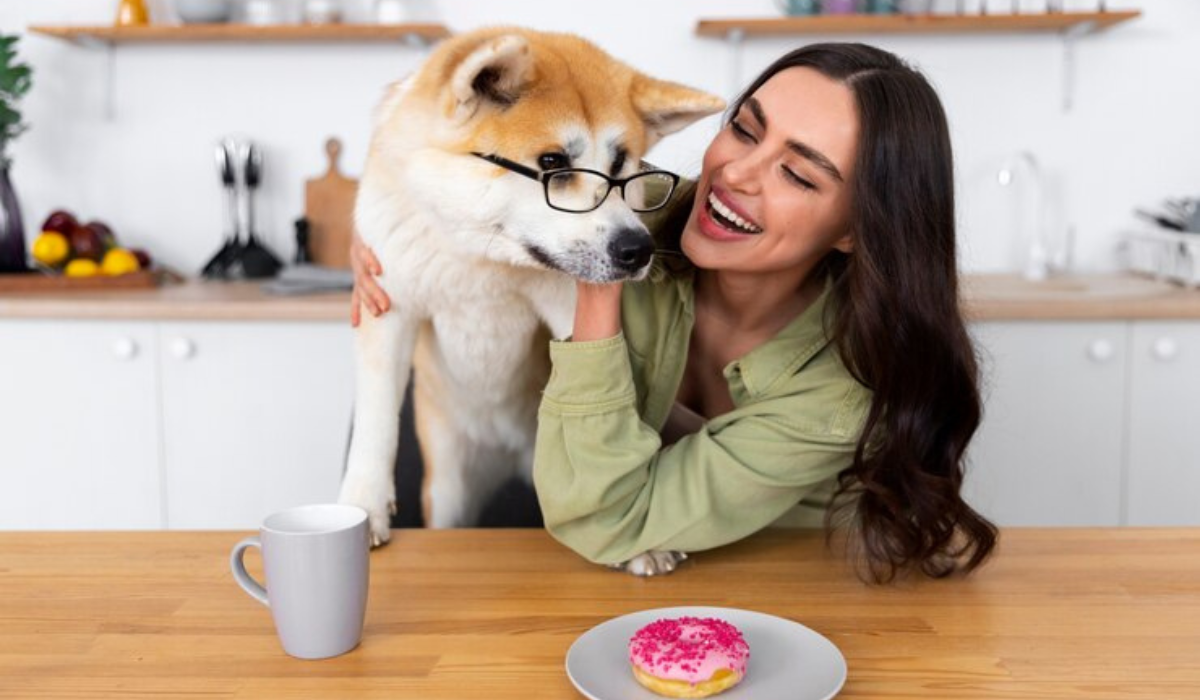It’s National Cook for Your Dog Day on November 1st, so pet owners across the nation are putting on their aprons and heading to the kitchen! Preparing a delicious, home-cooked meal that meets your loyal companion’s nutritional needs and tastes is the perfect way to express your appreciation.
Dogs: Why Should You Cook for Them?
Nutrition for optimal health:
There are many commercial pet foods that contain processed ingredients that may not provide optimal nutrition for your pet.
Your furry friend will receive fresh, whole foods when you cook at home.
Dietary needs-tailored:
A customized meal can meet specific dietary requirements, such as allergies or calorie restrictions.
Commercial dog food contains processed additives that can be avoided when ingredients are controlled.
5 Tips for Cooking Safely for Your Dog
Consultation with a veterinarian:
Before introducing new foods or making significant dietary changes, consult your veterinarian.
The veterinarian can provide insight into the calorie requirements, allergies, and nutritional deficiencies of your pet.
Dietary Balance:
Make sure that your diet includes 40 percent protein, 50 percent vegetables, and 10 percent starch.
Make sure your meals contain essential nutrients, such as water, carbohydrates, vitamins, minerals, fats, and proteins.
Here are some trusted recipes:
Make sure your meals are safe and nutritious by using recipes that have been approved by your veterinarian.
Following recipes precisely ensures that the right ingredients are used in the right quantities.
A high-quality ingredient list:
For the best quality, choose organic, locally sourced ingredients.
Make sure each ingredient is safe for dogs by checking its safety.
Transitioning to a gradual diet:
To avoid gastrointestinal issues, don’t suddenly change your diet.
Introduce home-cooked meals gradually alongside the regular diet, observing any adverse reactions.
Recipes for dogs that should be avoided
In spite of the joy of cooking for your dog, you must avoid certain foods that can harm him:
I love avocados
Almonds and macadamia nuts (especially)
A chocolate bar
Fruits of the citrus family
Raisins or grapes
Garlic and onions
The bones
Foods high in salt and fat
Dough made from yeast
The alcohol industry
The xylitol sugar
It’s National Cook for Your Pets Day!
The National Cook for Your Pets Day presents a wonderful opportunity for pet owners to share meals with their furry companions and express their love for them. You should ensure the safety and nutritional value of the ingredients when giving your pets homemade treats or meals. Your pet’s condition or allergy may require consultation with a veterinarian.
Simple and safe ways to cook for dogs
Among the meats:
Choose skinless, boneless chicken or lean ground turkey without seasoning.
The starches are:
Sweet potatoes are better than red or brown potatoes. Alternatively, you can cook plain rice and use it as a starch.
The eggs are:
In moderation, give your dog thoroughly cooked scrambled eggs without any added spices.
Veggies:
A variety of vegetables can be enjoyed by dogs, such as carrots, green beans, broccoli, cauliflower, peas, and lettuce. Onions, mushrooms, and asparagus should be avoided.
Fruits include:
Avoid seeds, peels, pits, and rinds when serving fruits like bananas, strawberries, blueberries, blackberries, raspberries, mangoes, and apples.
The peanut butter:
It is a classic indulgence for dogs, but be careful not to use xylitol, a toxic sugar substitute.
A yogurt is:
Plain yogurt, whether Greek or regular, can provide dogs with a healthy yogurt parfait with fresh fruit.
A Carnivorous Delight: Cooking for Cats
Guidelines for meat:
Raw meat and bones should be avoided. Avoid deep frying and stick to skinless, baked, or boiled meats.
Turkey and chicken:
Small portions of high-protein and low-calorie treats make for safe daily treats.
The fish:
An omega-3-rich cat food is thoroughly cooked fish, free from skin and bones.
The beef:
You can make a tasty and healthy cat treat by choosing lean beef, trimming off excess fat, removing bones, and cooking it thoroughly.
Cooking Tips for Pets
Seasonings should be avoided:
Spices and seasonings should not be added to pet food.
Consultation with a veterinarian:
Make sure meals address specific health conditions and meet nutritional needs by consulting a veterinarian.
Ingredients of high quality:
To get the best nutritional value, choose high-quality, organic, and locally sourced ingredients.
Transitioning to a gradual diet:
In order to avoid digestive issues, introduce home-cooked meals gradually if you are transitioning from commercial pet food.
In conclusion
The National Cook for Your Pets Day is an ideal opportunity to celebrate your bond with your pets through culinary delights. You need to prioritize safety, nutrition, and the joy of sharing moments with your cherished pets, whether you are cooking delectable meals for your dogs or making carnivorous treats for your feline companions. Enjoy your cooking









